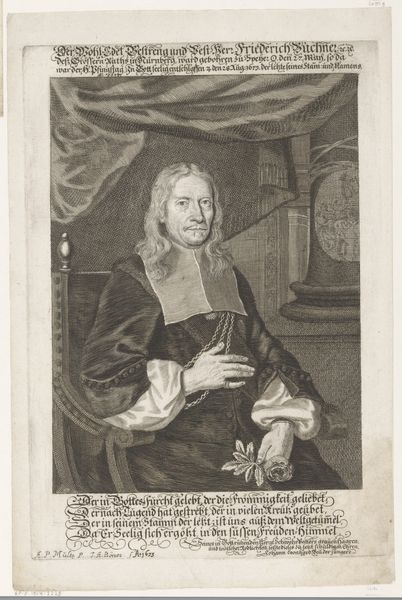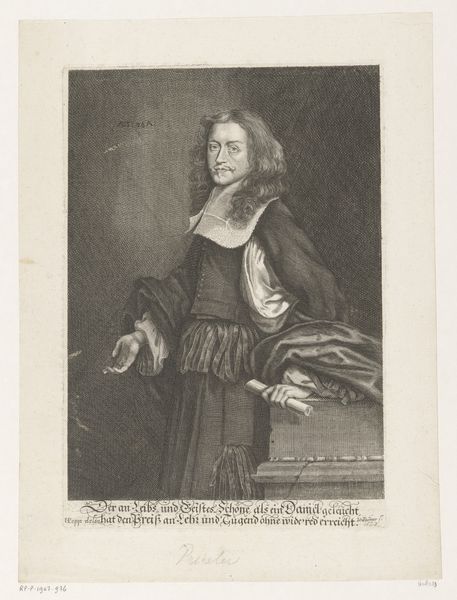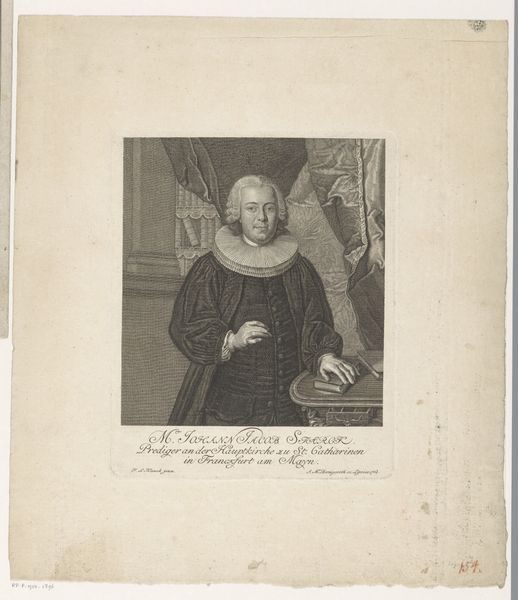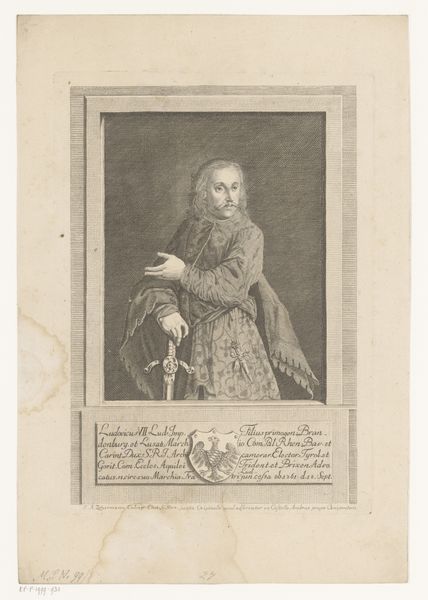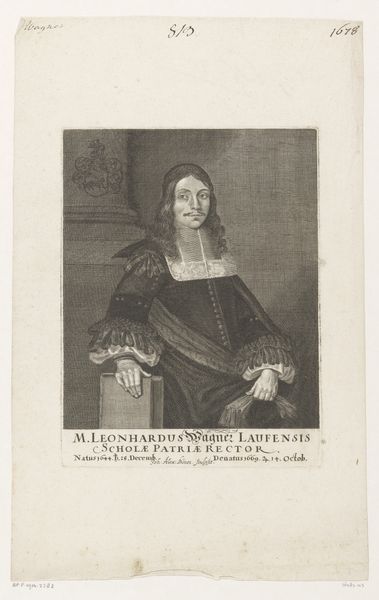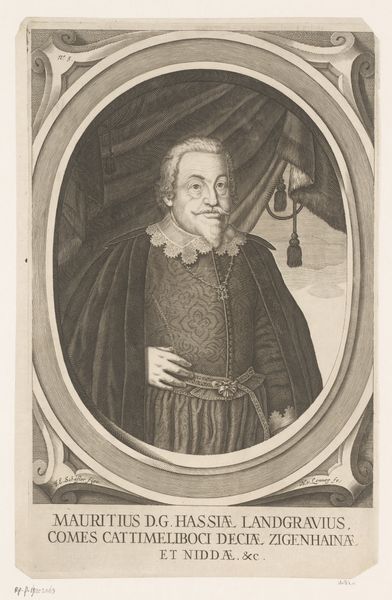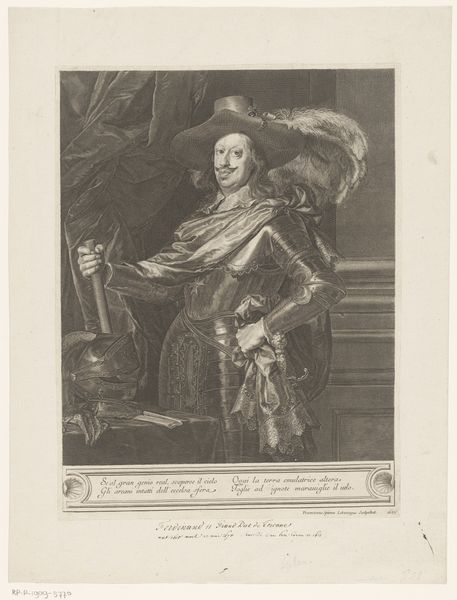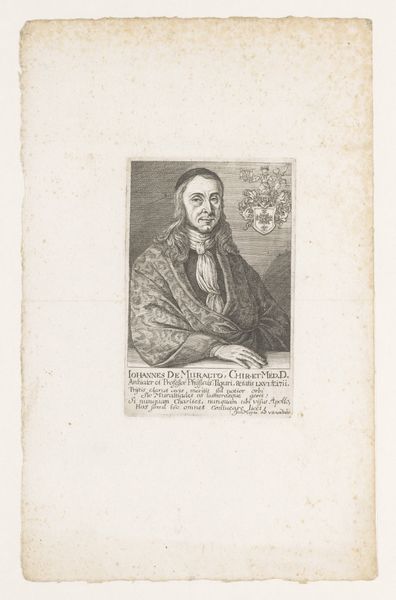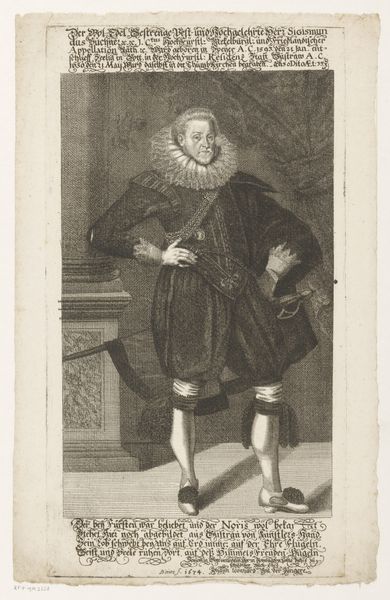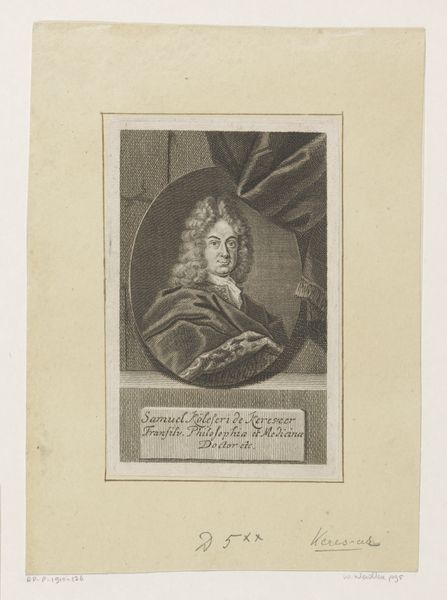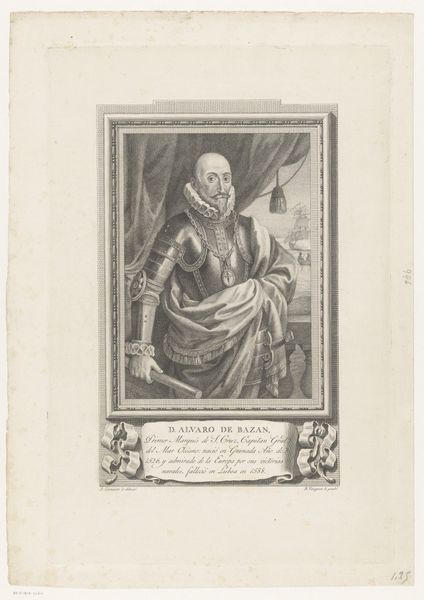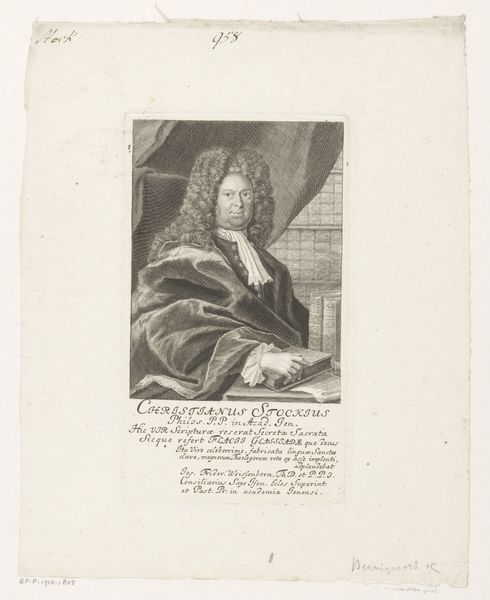
print, engraving
#
baroque
# print
#
line
#
history-painting
#
engraving
Dimensions: height 238 mm, width 158 mm
Copyright: Rijks Museum: Open Domain
Curator: My word, he looks important! Austere, powerful... that ruff alone speaks volumes, doesn't it? Like a halo of starched linen. Editor: Indeed! This is a print, an engraving specifically, called "Portret van Sigmund Herelius," possibly created between 1618 and 1628 by Hans Troschel. Herelius was a rather prominent figure. These engravings were, of course, essential for circulating images and establishing status. Curator: Status, yes! Look at him, clutching that intricately carved goblet and those feathered plumes. Symbols, all! I wonder what they signified for Herelius himself? Is it power? Refinement? Editor: The goblet could reference communion and religious authority, and the feathers may speak to literary or intellectual pursuits, nobility even. Let’s remember these portraits served as key signifiers of rank. Curator: He seems so very still... as though time has settled heavily upon him. His face betrays weariness. The fine lines etched there mirroring, I suppose, the engraver's lines, but on flesh. I almost feel his solemnity across the centuries. Editor: The Baroque period sought to capture dramatic emotion. While he is certainly reserved, there’s a definite sense of presence, aided by the rather sharp, contrasting lines typical of engraving, setting him against a more ambiguously rendered background, pillars that seem to disappear. Curator: Yes, and his cloak appears rather theatrically draped, almost a burden he’s obligated to carry, much like I suppose nobility has its burdens? The soft and subtle rendering in it is amazing too! How an engraver could capture such drapery amazes me! It creates an effect which otherwise feels heavy on my heart, a stillness and introspection that are hauntingly familiar. Editor: I’m intrigued by the inscription at the base; these epigrams offer insights into how his contemporaries perceived his achievements, often emphasizing civic virtue or spiritual values to complement the visual representation. Curator: Yes, a rich life immortalized, flattened to the surface but voluminous in memory, no? Thanks to Herr Troschel, anyway. Editor: A carefully considered image shaping public persona – and that is now part of art history, where his story continues.
Comments
No comments
Be the first to comment and join the conversation on the ultimate creative platform.
